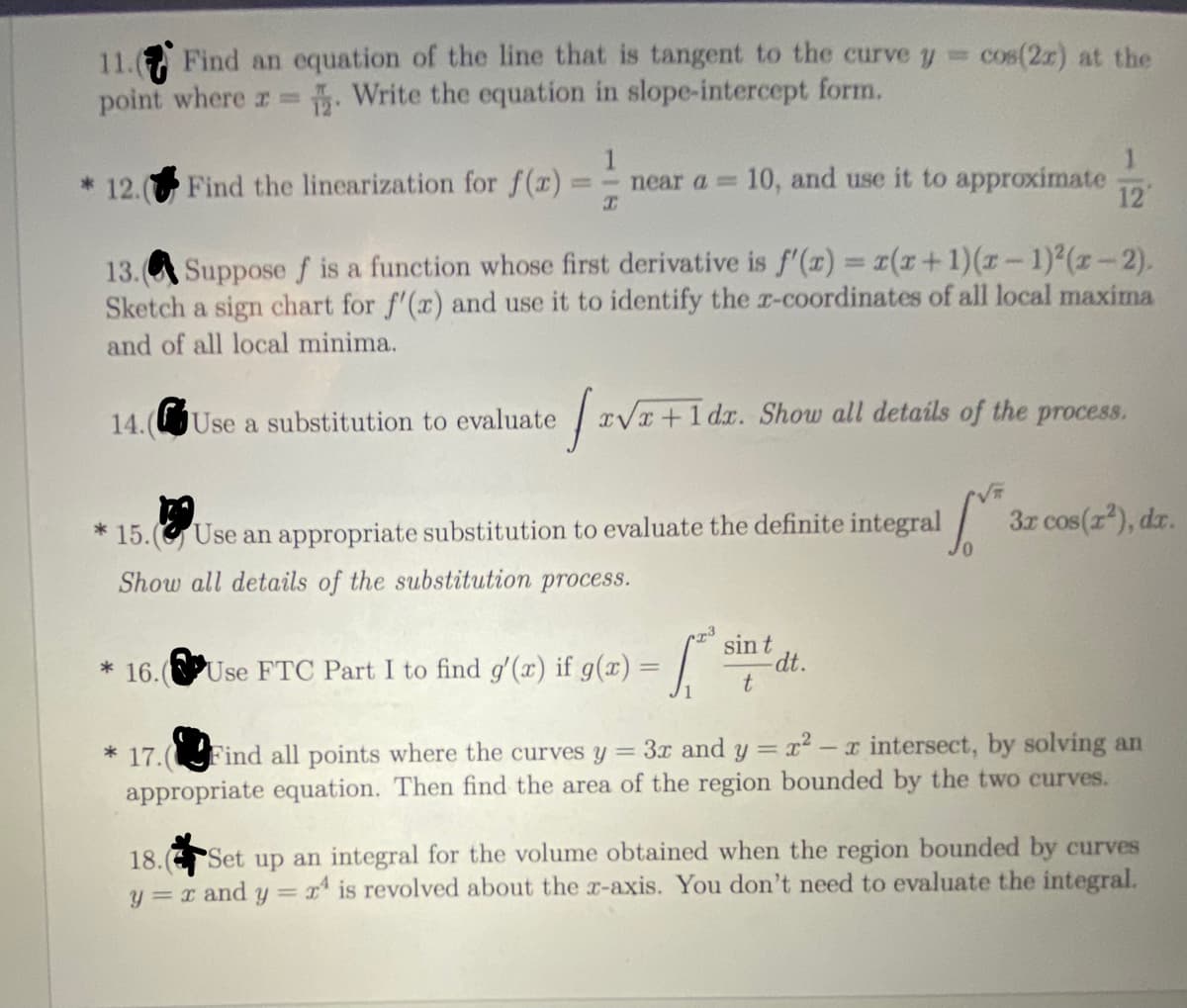Calculus: Early Transcendentals
8th Edition
ISBN:9781285741550
Author:James Stewart
Publisher:James Stewart
Chapter1: Functions And Models
Section: Chapter Questions
Problem 1RCC: (a) What is a function? What are its domain and range? (b) What is the graph of a function? (c) How...
Related questions
Concept explainers
Equations and Inequations
Equations and inequalities describe the relationship between two mathematical expressions.
Linear Functions
A linear function can just be a constant, or it can be the constant multiplied with the variable like x or y. If the variables are of the form, x2, x1/2 or y2 it is not linear. The exponent over the variables should always be 1.
Question
Problem #14 look at the picture

Transcribed Image Text:11. Find an equation of the line that is tangent to the curve y cos(2r) at the
point where r Write the equation in slope-intercept form.
%3D
* 12. Find the linearization for f(r)
1
near a=
10, and use it to approximate
12
13.A Suppose f is a function whose first derivative is f'(x) = 1(x+1)(z-1)2(z-2).
Sketch a sign chart for f'(r) and use it to identify the r-coordinates of all local maxima
and of all local minima.
14.(Use a substitution to evaluate
xVx +1 dx. Show all details of the process.
3z cos(r), dzr.
* 15. (G Use an appropriate substitution to evaluate the definite integral
Show all details of the substitution process.
sin t
dt.
* 16.(PUse FTC Part I to find g'(x) if g(x) =
* 17.(Find all points where the curves y = 3x and y = r² – x intersect, by solving an
appropriate equation. Then find the area of the region bounded by the two curves.
Set up an integral for the volume obtained when the region bounded by curves
y = r and y= x is revolved about the x-axis. You don't need to evaluate the integral.
18.
Expert Solution
This question has been solved!
Explore an expertly crafted, step-by-step solution for a thorough understanding of key concepts.
Step by step
Solved in 2 steps with 1 images

Knowledge Booster
Learn more about
Need a deep-dive on the concept behind this application? Look no further. Learn more about this topic, calculus and related others by exploring similar questions and additional content below.Recommended textbooks for you

Calculus: Early Transcendentals
Calculus
ISBN:
9781285741550
Author:
James Stewart
Publisher:
Cengage Learning

Thomas' Calculus (14th Edition)
Calculus
ISBN:
9780134438986
Author:
Joel R. Hass, Christopher E. Heil, Maurice D. Weir
Publisher:
PEARSON

Calculus: Early Transcendentals (3rd Edition)
Calculus
ISBN:
9780134763644
Author:
William L. Briggs, Lyle Cochran, Bernard Gillett, Eric Schulz
Publisher:
PEARSON

Calculus: Early Transcendentals
Calculus
ISBN:
9781285741550
Author:
James Stewart
Publisher:
Cengage Learning

Thomas' Calculus (14th Edition)
Calculus
ISBN:
9780134438986
Author:
Joel R. Hass, Christopher E. Heil, Maurice D. Weir
Publisher:
PEARSON

Calculus: Early Transcendentals (3rd Edition)
Calculus
ISBN:
9780134763644
Author:
William L. Briggs, Lyle Cochran, Bernard Gillett, Eric Schulz
Publisher:
PEARSON

Calculus: Early Transcendentals
Calculus
ISBN:
9781319050740
Author:
Jon Rogawski, Colin Adams, Robert Franzosa
Publisher:
W. H. Freeman


Calculus: Early Transcendental Functions
Calculus
ISBN:
9781337552516
Author:
Ron Larson, Bruce H. Edwards
Publisher:
Cengage Learning